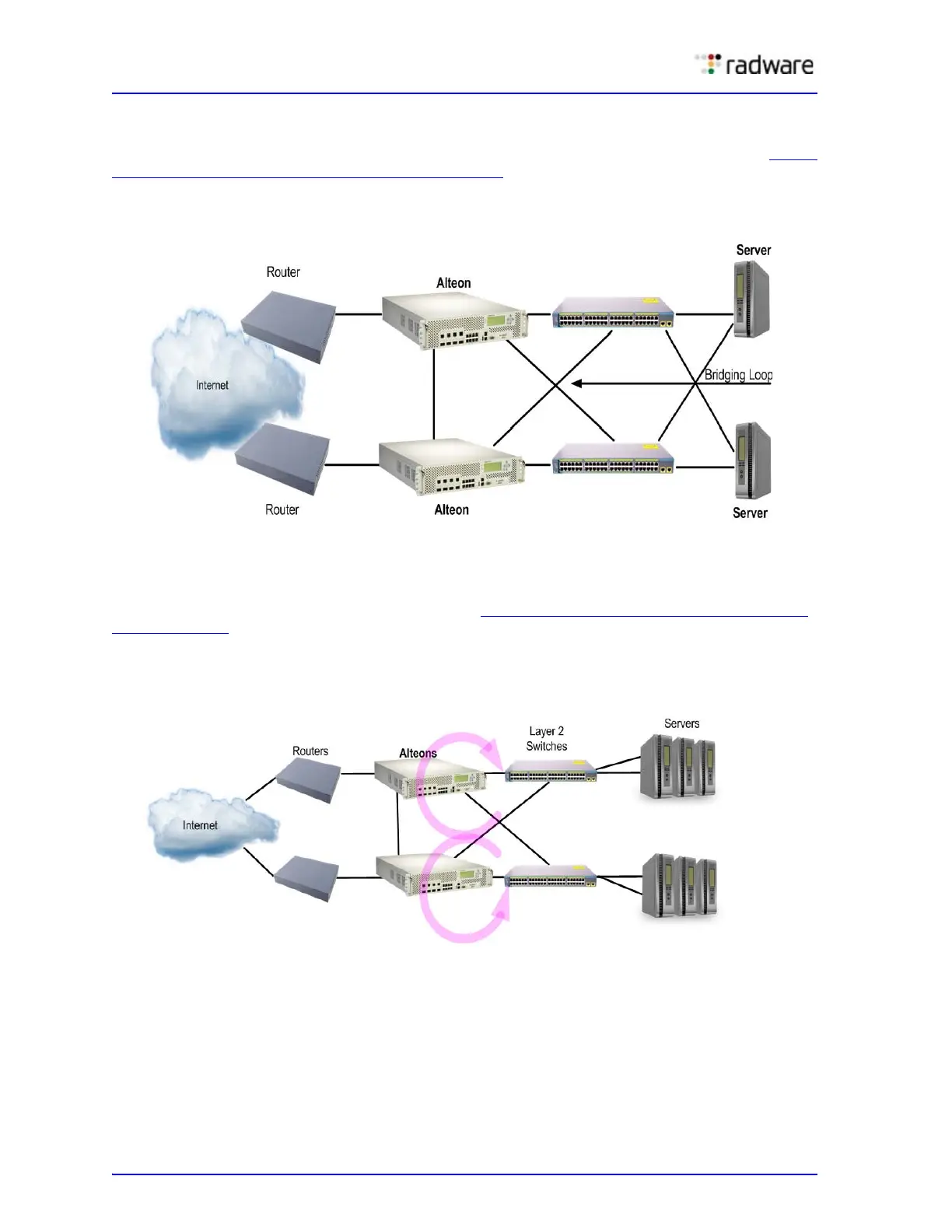Alteon Application Switch Operating System Application Guide
High Availability
568 Document ID: RDWR-ALOS-V2900_AG1302
Eliminating Loops with STP and VLANs
Active-active configurations can introduce loops into complex LAN topologies, as illustrated in Figure
85 - Loops in an Active-Active Configuration, page 568:
Figure 85: Loops in an Active-Active Configuration
Using Spanning Tree Protocol to Eliminate Loops
VRRP generally requires Spanning Tree Protocol (STP) to be enabled in order to resolve bridge loops
that usually occur in cross-redundant topologies. In Figure 86 - STP Resolving Cross-Redundancy
Loops, page 568, a number of loops are wired into the topology. STP resolves loops by blocking
ports where looping is detected.
Figure 86: STP Resolving Cross-Redundancy Loops
One drawback to using STP with VRRP is the failover response time. STP could take as long as 45
seconds to re-establish alternate routes after an Alteon or link failure.

